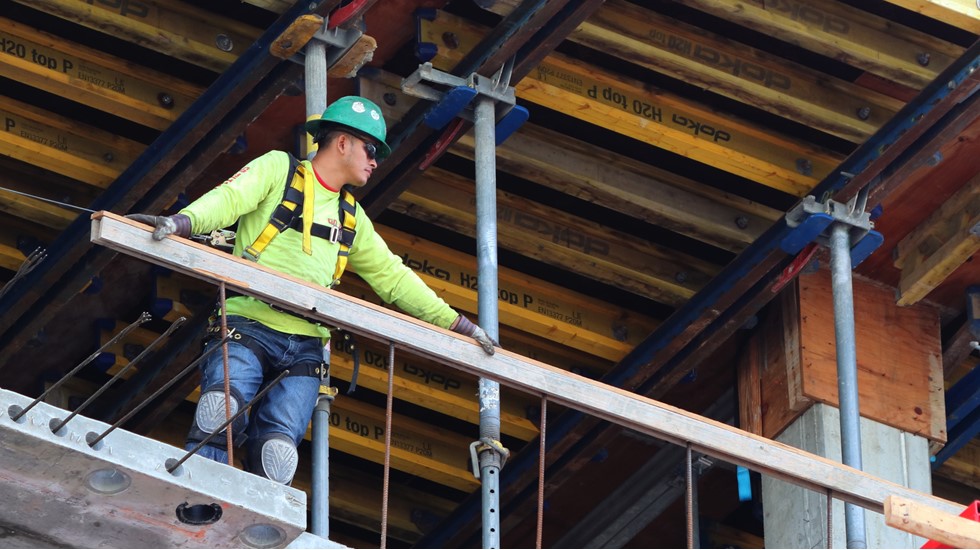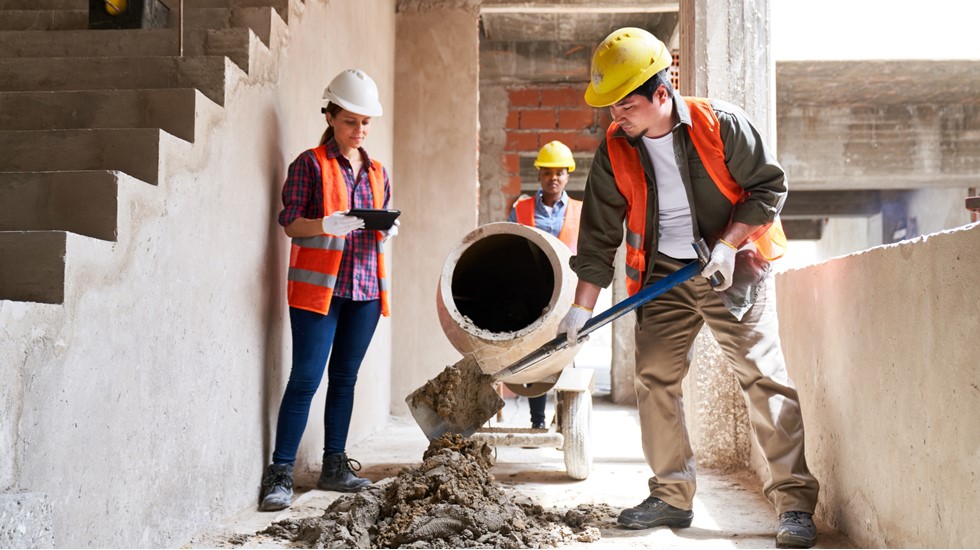Construction spending follows a downward trajectory
Policy uncertainty continues to drag on the construction sector.

August 1, 2025
Construction spending weakened by 0.4% in June and fell 2.9% compared to last year. Through the first half of this year, spending has fallen $22 billion compared to the same period in 2024. (The data is not inflation adjusted.) Input costs for construction have risen 2.4% from a year ago, not including rising labor costs.
Private construction spending, including residential and nonresidential, has declined for 13 straight months. Private residential construction spending fell 0.7% in June due to declining single-family home construction. Multifamily construction was flat. Elevated mortgage rates and weakening household balance sheets are leading prospective home buyers to remain on the sidelines.
Private nonresidential construction spending dropped 0.3% in June. The biggest decline occurred in office construction, which fell 1.4%. The largest increase in spending showed up in transportation, which grew 2.2%.
Data center construction spending continues to reach new records. It is up 330% over the last four years. Power infrastructure spending bounced back in June after a soft May.
Otherwise, construction of manufacturing plants for computer, electronic and electrical equipment declined for the fifth straight month, continuing to slide from mid-2024 highs. These structures include chip and battery plants. The 2022 Inflation Reduction Act and CHIPS and Science Act had driven construction activity in this industry.
Public construction spending edged 0.1% higher in June. Higher state and local spending, where a majority of public spending occurs, was the driver as many states closed out their fiscal years in June. Federal construction spending plunged 4.4% during the month.
The odds of a Federal Reserve interest rate cut soared with today’s weak jobs report.

Benjamin Shoesmith
KPMG Senior Economist
Bottom Line
Policy uncertainty continues to drag on the construction sector. Labor concerns are becoming more pronounced and tariffs more onerous. Semi-finished copper goods joined steel and aluminum with 50% tariffs, while investigations into lumber may introduce higher tariffs in the third quarter. The odds of a Federal Reserve interest rate cut soared with today’s weak jobs report, although this is not a sure thing.
While lower rates would be welcomed by potential home buyers, some on the Fed have expressed concern about lingering inflation. According to surveys by the Federal Reserve Bank of New York and the Institute for Supply Management, firms are already passing along price increases stemming from tariffs.
Explore more

Construction spending slumped 0.3% in May; down 3.5% compared to a year ago
Policy uncertainty weighs over the construction sector as rising costs of inputs and labor are complicating projects.

KPMG Economics
A source for unbiased economic intelligence to help improve strategic decision-making.

Housing starts led by multifamily construction
Builders are cautiously optimistic about sales six months from now.
Subscribe to insights from KPMG Economics
KPMG Economics distributes a wide selection of insight and analysis to help businesses make informed decisions.
Meet our team
